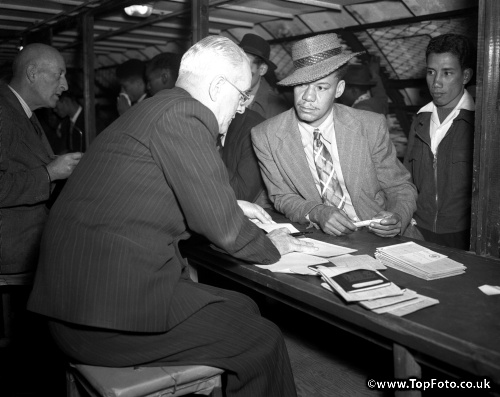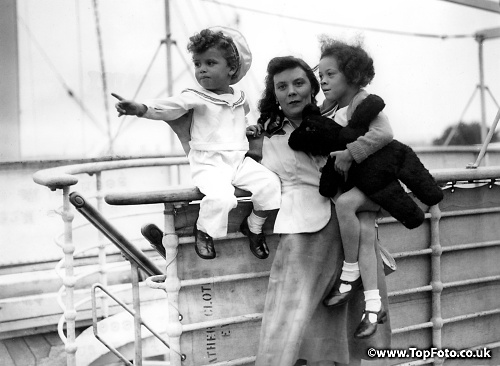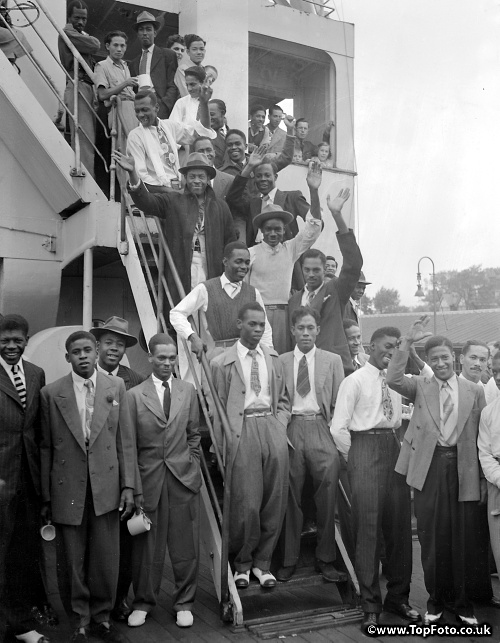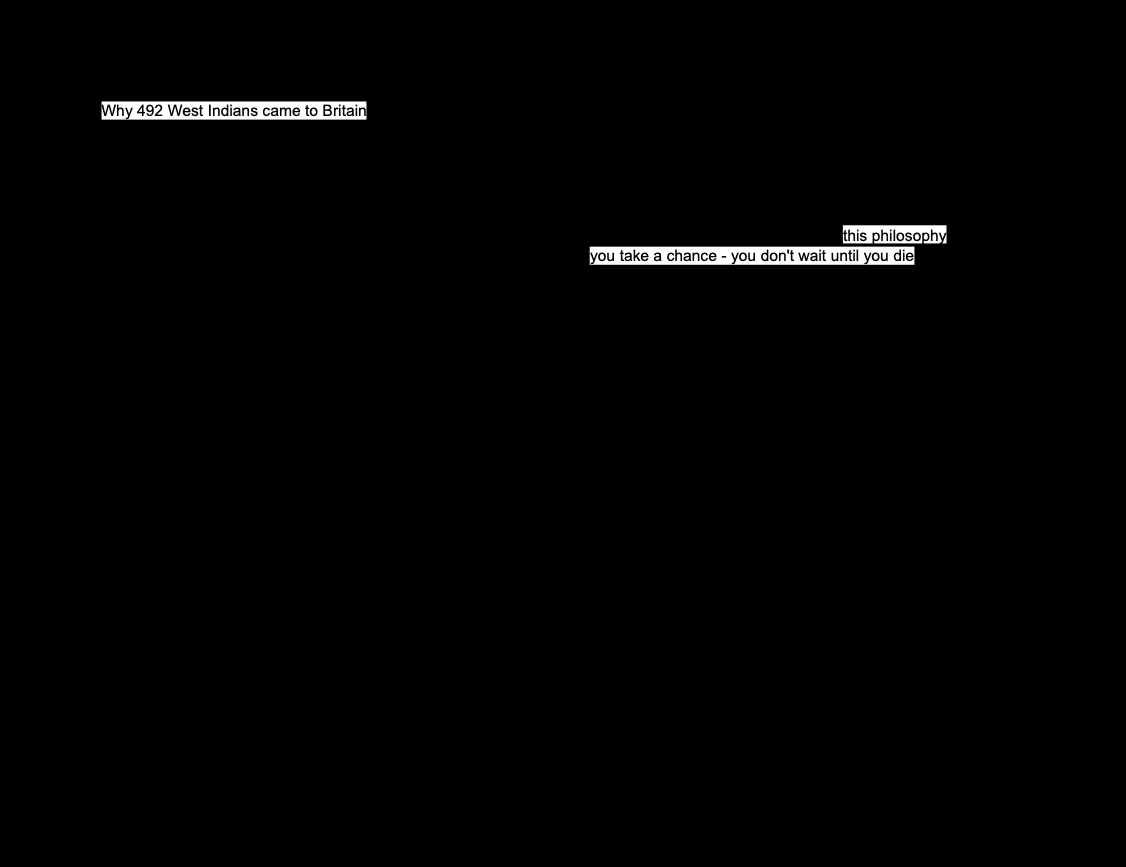Replaying the Record: Flipping the Script
by Rommi Smith, TopFoto archive Writer-in-Residence
29 April 2021

Record comes from the Latin word recordari – the term cor meaning heart. The stylus on the record player might, then, best be thought of as passing through the heart – again and again and again. Beyond the turntable, the term record is integral to archive: record – as in the verb to document; records – as in documents.
I’ve been thinking a lot (and particularly over the last six years since I began my doctoral research) about how artists replay records, or archival documents using creativity to realise, or release counter-narratives; replaying the original document so that a different “song” can be heard. What happens when we “replay” the static, hard copy of the record in order to hear the hidden song, or story beneath the surface? I define these flipside, or counter-narratives “ghost documents”; the subliminal, submerged, spectral narratives which exist beneath the surface of the original, visceral document (Smith, 2019). That ghost documents are “ghost” at all is indicative of their status as unseen (or lesser seen) presences. Their status is made invisible in contrast to dominant, overt, visible, accepted, celebrated narratives. What I term “ghost documents” in my own academic research has a resonance with what Queer scholar Jose Esteban Munoz identifies as: “traces, glimmers, residues and specks of things” (1996, p.10). Ghost documents are archival traces and presences located by sensation, feeling, hunch, whisper and clue – what Phillip Brian Harper calls “Felt Intuition” (2000).
Ghost documents are not just the unseen, or unacknowledged records, but the overlooked, marginalised and dismissed readings of those documents; the possibilities, in terms of cultural and historical meaning, which are cast into the river of forgetting. Archival work is about remembering; being in residence in an archive is a form of remembrance. As artists, as makers and seekers of stories and new meanings, we divine those ghost documents; dowsing for their existence; tuning into their frequencies; helping to bring their possibility to the surface and towards acknowledgement.
Hundreds of photos within the TopFoto archive narrate a different, prismic, facet of what has come to be known (reductively and problematically) as the Windrush[1] era; a broad term used to define Caribbean migration to Britain between 1948 (when the SS Empire Windrush arrived at Tilbury Docks) and, approximately, 1973 (Brinkhurst-Cuff, 2018, xxv). These records disrupt the official music of Windrush, depicting women, men, children, mixed-heritage marriages; every single passenger their own story.



The Guardian (2016)
I replay the text of the document over and over and over again; turning it again and again in contemporary light to see what different meanings might rise to the surface.

Using a method I term redaction-as-revelation (Smith, 2019, p.216-220), I realise sketch poems (raw, immediate, journaling-style poems) which aim to subvert or disrupt the hierarchical messages in the original article’s text. I locate the article’s overt and latent biases – overarching insinuations; sideways statements which imply, or question the principles, morals and truths of people onboard the SS Empire Windrush. For instance, a list of the trades people gave for themselves (“a builder, a carpenter, an apprentice accountant […] and a lawyer”), was met with a single line of revealing racial paternalism, which confers doubt upon their trades: “[o]r thus they described themselves.”
The poet and scholar, Ruth Padel writes: “[b]reath is caught and held across white spaces” (2010, p.25). I reflect on this articulation in a context of: race and racism; the Black Lives Matter protest-slogan (and the final words of Eric Garner): “I can’t breathe” (Okri, 2020); thinking about the relationship between black texts and white spaces; the Middle Passage; the depths and the secrets of the Transatlantic. Replaying and replaying the news article using digital Black ink, I meditate on the idea of: Black presences being read as disrupting or transgressing white spaces; moral panics founded on false notions of flooding; holding one’s breath as metaphor for the unsaid – and the things one cannot say. I see the use of black ink as a way to subvert and inverse the rules of the official, white page – rewriting the dominant story

so that the text can breathe, differently:

I ask questions of the original text and see what answers come back:

I posit alternative meanings and motivations for the journey:

 (Smith, 2021)
(Smith, 2021)……………………………………………………………..
Brinkhurst-Cuff, C. ed. 2018. Mother Country. London: Headline.
From Our Special Correspondent. 1948. Why 492 West Indians Came to Britain: Not All Intend to Settle Here. The Guardian. [Online]. 23rd June. [27 April 2021]. Available from: https://uploads.guim.co.uk/2016/05/10/Empire_Windrush_23_June_1948.jpeg
Harper, P.B. 2000. The Evidence of Felt Intuition: minority experience, everyday life and critical speculative knowledge. GLQ. 6 (4), pp.641-657.
Munoz, J.E. 1996. Ephemera as Evidence: Introductory Notes to Queer Acts. Women and Performance Journal of Feminist Theory. 8 (2), pp. 5-16.
Okri, B. 2020. ‘I can’t breathe’: why George Floyd’s words reverberate around the world. The Guardian. [Online]. 8 June. [Accessed 28 April 2021]. Available from: https://www.theguardian.com/commentisfree/2020/jun/08/i-cant-breathe-george-floyds-words-reverberate-oppression
Padel, R. 2010. The Silent Letters of the Alphabet. Newcastle: Bloodaxe.
Smith, R. 2019. The Map Where We Meet and Other Queer-Quare Stories. In: Ghaziani, A and Brim, M. eds. 2019. Imagining Queer Methods. New York: New York University Press, pp.207-229.
Smith, R. 2021. Redaction-as-Revelation poems. UK: 125th & Midnight.
The Guardian. 2016. West Indians arrive in Britain on board the Empire Windrush – archive, 1948. The Guardian. [Online]. 23rd June. [Accessed 10 April 2021]. Available from: https://www.theguardian.com/uk-news/2016/jun/23/immigration-windrush-west-indians-jamaica-britain
[1] It is a term which the journalist and editor Charlie Brinkhurst-Cuff describes in the book Mother Country (2018) as “inherently flawed”, not only because Caribbean migration to the UK happened prior to 1948 and after 1973, but because of the historical misinformation about the Windrush ship (such as that it only brought men from Jamaica), which has led to the Scottish Makar, Jackie Kay, referring to it as a “fiction of a ship” (xxv). As scholar Naomi Oppenheim states in her chapter in Mother Country entitled Strange Lands (pp.74-82):
“the ‘Windrush generation’ […] has become a useful symbol that has opened up a discussion. I can see why it has become frustrating […] it undoes a lot of the hard work that activists, scholars and historians have been doing to move us beyond the 1948 moment. There were forgotten ships before the Windrush like the SS Ormonde and the Almanzora” (p.75).
……………………………………………………………..
